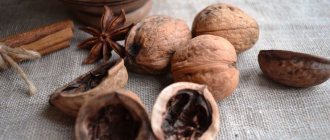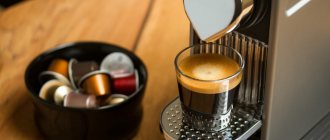Can I use a blender?
The design of a blender is in many ways similar to a blade coffee grinder. The main difference is the location of the knives at a higher level. Therefore, during operation, some of the grains become clogged under them. You have to periodically pause the process, stir the mixture or shake the bowl so that the stuck grains begin to move again. Accordingly, the procedure causes certain difficulties.
You can use the blender as a coffee grinder if you plan to brew the drink in a Turkish coffee pot.
It will not be possible to grind coffee beans for a coffee maker, since this brewing method requires smaller fractions.
Subtleties of use
Device features and advanced models
A blender is used to grind and mix products. Models Kitfort KT, Bosch, VIGOR HX, Philips HR, RAWMID Dream Greenery, Galaxy GL have the function of chopping solid components: nuts or ice.
Blender knives are located at a distance of 5-10 millimeters from the bottom and walls of the bowl. Therefore, it will not be possible to grind coffee beans efficiently.
The grains sink to the bottom or bounce toward the walls, and the foot blades slide along their surface. To continue grinding, you need to turn off the machine and stir the coffee mass.
Coffee lovers will be helped out by blenders and coffee grinders, which combine the advantages of these devices. These are models from DOMOTEC, Hometronics HTOT, Royalty Line.
Standard option
Not everyone has the opportunity to purchase an advanced model, which is 2000-5000 more expensive than a regular one. Therefore, let’s find out whether it is possible to grind grains using a standard machine.
It is possible to grind coffee in a blender, but the result is not a fine powder, but a heterogeneous mass with medium and large pieces.
This type of grinding is not suitable for a regular coffee maker, but you can brew an aromatic drink in a Turkish coffee pot. Unequally sized pieces are also used for drip coffee makers or French presses. Only the brewing time for coffee should be increased by 6-8 minutes.
Interesting! Freeze-dried coffee: what does it mean and how is it made?
Preparing the device for grinding
A blender is not the best grinder for coffee beans. This method of grinding requires some preparation. Before you start grinding coffee, you need to do the following:
- Make sure there is a cover. If you carry out the process without this detail, the grains will scatter throughout the kitchen. After grinding is completed, you will have to spend a lot of time cleaning.
- Count the number of knives with which the unit is equipped . Only double knives with at least four cutting blades are suitable for grinding. If they are single, and there are only two blades, the desired result will not be achieved. Even if the motor is very powerful, the maximum that will be obtained is a coarse grind suitable for a French press.
- Wash and dry all parts of the device. Various products are ground in a blender. It is extremely important to ensure that there are no food residues or foreign odors before use. The presence of moisture during grinding is unacceptable.
What ideas do you have?
Now let's look at ways to grind coffee beans if you don't have a coffee grinder at hand. This unit can easily be replaced by other means.
Blender
It can replace a coffee grinder with great success. This unit grinds hard products: nuts, dense vegetables, and can also handle coffee material. The designs of a blender and a coffee grinder are similar; the knives present in both household appliances successfully grind food. In a blender, the cutting blades are located slightly higher above the bottom of the bowl compared to a coffee grinder, so it will not be possible to grind the grain to a “dust” consistency or a fine degree of grinding. But a medium or coarse grind is quite achievable.
When using a blender as a coffee grinder, be sure to cover the bowl with a lid to prevent coffee particles from scattering. Choose low operating power, add no more than 50 g. grains and do not let the unit operate for more than 1 minute. After taking a break for 1 - 2 minutes, you can continue the process.
Food processor
When grinding coffee beans in a food processor, the grains will not be uniform because the blade blades are not positioned low enough. Actually, the same as in a blender. You need to grind coffee in such a unit in small portions with a break after every minute or two of operation to rest the motor.
Tip: if the ground product is too uneven, use a sieve. Sift the coffee and you get two different-sized sets. Use the one that consists of small grains to prepare the drink in a Turk; the large fraction will brew well in a French press.
Mechanical mill
A mechanical mill specially designed for this purpose grinds coffee beans perfectly. It is called a manual coffee grinder. Strong mini millstones do their job perfectly. By adjusting their location in relation to each other, you can change the degree of grinding. The closer and closer the blades move, the finer the grind will be. A manual mechanical mill can grind coffee beans to a uniform flour consistency.
The millstones rotate using a lever handle, which is easily removed to save space in a kitchen cabinet or travel bag. Many coffee lovers take familiar and reliable manual mechanical mills with them on trips so that they do not require electricity to use. And the grains will be ground to the required degree.
Note: there is a special charm in mechanical mills. They know how to create a romantic atmosphere, an indescribable “coffee” comfort. The quiet, rustling sound of working millstones, the coffee warmed by the warmth of your hands, the beautiful design of the coffee grinder, the incomparable, soothing aroma and the anticipation of a cup of coffee over a pleasant conversation.
A mechanical grinder for grinding spices is also suitable for coffee beans. But its power is lower, and not everyone will like the pungent smells of spices, which will certainly be transferred to the grains and the drink made from them.
Meat grinder
Why not use such an assistant if you don’t have a coffee grinder? Both electric and mechanical meat grinders are suitable. This is one of the most popular methods of grinding at home.
Mandatory action before use: wash the unit well and dry thoroughly. So that even hints of foreign odors do not encroach on the luxurious coffee aroma. If the degree of grinding is not satisfactory due to a large difference in particles, use a sieve according to the method described above. Repeatedly passing already ground coffee through a meat grinder will help make the grind finer.
From personal experience. Now the fashion for green (unroasted) coffee has declined. But just two years ago, advertisements about the benefits of green coffee beans were on display. Either the goods lying around have already been sold out, or the promised effect did not follow, but the popularity of unprocessed coffee beans has passed. During the boom, people bought green coffee by the kilo in hopes of losing weight and improving their health. At first it was supplied to the market only in grains. And it was incredibly difficult to grind these grains... No matter what they tried! How many meat grinders, blenders and coffee grinders were damaged! The hard, wet, heavy coffee bean was not amenable to mechanical processing. It could only be crushed manually, with a fair amount of effort.
Then manufacturers began to supply already ground green coffee, but damaged equipment could not be returned. Therefore, if you buy this product not for the purpose of frying it yourself, but for eating it raw, choose only the ground version.
Hammer
With this simple tool, which can be found in every home, grinding coffee beans, including stubborn green ones, can be quickly and even fun. To do this, put the required amount of beans in a plastic bag, then this bag in another - to be safe. Place them on a hard surface, such as a cutting board. Cover the bags of grains with a thin towel and hit them with a hammer until you achieve the desired result. A hammer for beating meat is also suitable for the task.
The degree of “hammer” grinding depends only on the effort applied. The result is even better than using a meat grinder or blender. Moreover, many, after receiving unsatisfactory quality of grinding in a blender, “finish off” large particles with a hammer.
Advice. Organize a home competition on the topic: “Who can crush coffee with a hammer to a fine grind the fastest?” It is advisable that the neighbors are away or you are at the dacha. There will be a lot of noise! The prize for the winner will be a hammer laid out with glued coffee beans on a board and, of course, a cup of wonderful coffee.
rolling pin
Another tool that is always at hand in the household is a rolling pin. The preparatory stage is the same as when using a hammer: grains in two bags, cover with a towel. Roll out with a rolling pin until the result is achieved. There will be less noise, but the grinding may also be coarse. If this happens, take the hammer!
Mortar
It is easy to grind coffee beans by hand in a mortar. This is the most ancient method of crushing grains, used back in Ancient Egypt. We can also revive Egyptian antiquity by grinding coffee in a mortar and pestle. Only with this method arm yourself with patience and accuracy. Do not put more than two tablespoons of grains into the mortar; it is better to grind in small portions, covering the mortar with your hand. Then the grinding will be uniform, fine enough, and grain particles will not scatter throughout the kitchen.
This method has many fans. The process is monotonous, calming, conducive to conversation. And a mortar in the kitchen interior looks stylish, especially when made of natural stone - marble or granite. To grind spices, it is better to have a separate mortar and pestle.
Stones
If no other home remedies are available, then regular stones will do. Use them instead of a hammer, using the same method. Don’t forget about this method if you want to indulge in some coffee in nature, at the dacha, and nothing other than the proven “weapon of the proletariat” is nearby.
High-quality grains, crushed immediately before being combined with water and delighting us with our favorite drink, cannot be compared with instant powder. Let's not deprive ourselves of pleasure! There are so many ways to achieve what you want.
Do you really have any other way to grind coffee beans without a coffee grinder? I would like to know!
Differences between submersible and stationary
There are only two main types of blenders: stationary and immersion. Both options have a number of characteristic features, advantages and disadvantages that should be taken into account during operation.
Submersible
Grinding in a submersible device causes certain difficulties. To grind coffee in such a blender, you need to select a container with a closing lid in advance. Only in this case, part of the powder will not spill out.
When using this grinding device, you will have to periodically pause the process, remove the moving part of the structure and remove small particles stuck in it.
Stationary
It is quite possible to grind coffee in a stationary device of compact size. It will be difficult to grind grains in a large device. They will simply scatter throughout the bowl. Accordingly, grinding will take a lot of time.
The stationary unit has a great advantage. It is equipped with a lid that prevents the resulting fractions from spilling. In addition, it is possible to use a pulse mode. Thanks to this, the operation of the system is periodically suspended, which means there will be time to shake the bowl and move the grains closer to the knives.
Stationary device
Getting ready for work
If you had to grind coffee in a blender, use a stationary device with a small or narrow bowl. If the distance between the bottom, walls and knives is more than 5 millimeters, the grains will rarely fall under them and therefore will not be crushed.
Wash and dry all parts of the device. There should be no food residues or drops of water - this will spoil the taste and smell of the drink. Be sure to cover the bowl while working, otherwise the coffee beans will scatter throughout the kitchen.
Interesting! Difference between espresso and other coffees
Check the quality of the knives . To properly grind coffee, choose double ones with four blades. If there are fewer, you won't even get a coarse grind.
Step-by-step instruction
Grinding grains is possible only if you follow the rules:
- select the lowest power;
- pour 50 grams of grains;
- turn on the device for a minute, turn it off and stir the coffee mass;
- Allow the device to cool for 1-2 minutes and repeat the previous step.
It is better to use pulse mode. If the device is operated for more than 1 minute, it will begin to heat up. Because of this, the drink will acquire an unpleasant burnt taste.
The last step is to wash all parts of the device to eliminate the smell. With this grinder you will get large particles. If you need a fine powder, place the coffee mixture in a cloth or plastic bag and work it over with a rolling pin or hammer.
Disadvantages of grinding in a blender
In principle, it is possible to grind coffee beans with a blender, but this method has a number of disadvantages. Among them are the following:
- When grinding grains regularly, the knives quickly become deformed. Additional funds will be required to replace them.
- When using a stationary device, the bowl may be damaged. The grains scratch the walls and microcracks appear. In addition, the container absorbs coffee aroma. This will affect the quality of other products crushed in the device.
- There is a risk of spoiling the grains. When grinding quickly, coffee overheats and acquires a burnt taste and aroma.
You should use a blender instead of a coffee grinder only in exceptional cases. It is strongly not recommended to systematically resort to such manipulations.
How to grind coffee in a blender?
The process depends on the selected model and may be as follows:
- If submersible type is used. First, take a nozzle with strong and sharp blades. Grains are poured into a suitable container. There should be few of them to make it easier to grab food. The submersible model allows you to independently control and regulate the grinding process. When grinding, it is important to prevent overheating of the equipment and cover the container with a lid.
- Application of a stationary model. For coffee beans, be sure to use a nozzle with sharp, double blades. The products are placed in the bowl, the lid is tightly closed and the blender is turned on. Overheating is also fatal for this model. Therefore, it is recommended to grind at medium speed and take breaks periodically. The coffee also needs to be stirred regularly to ensure a more even grind.
How else can you grind coffee?
There are a number of alternative options for grinding coffee beans:
- Mechanical mill. The device is designed for grinding herbs and spices. Sometimes it can be used to grind coffee. True, it will not be possible to obtain small fractions in this way.
- Meat grinder. Electrical and manual devices can be used. You should use knives that allow you to chop the product as finely as possible.
- Rolling pin. In order to obtain small fractions, the grains should be placed on a cloth and wrapped. Grinding is done by applying pressure with a rolling pin. True, this requires some effort.
- Hammer . It is used in a similar way to a rolling pin.
It is best to grind coffee in a coffee grinder, but you don’t always have one on hand. In such situations, a blender will come to the rescue. This kitchen unit is also capable of grinding coffee beans. The main thing is to avoid overheating during its operation. Otherwise, all your efforts will be in vain.
What's better
Knives and bowls
Both devices are similar in form and function, but there are differences.
A coffee grinder is designed to grind coffee beans and other solids into powder. A blender grinds and mixes soft foods and makes purees.
It is acceptable to use a blender as a coffee grinder, but not more than 1-2 times a week. This is explained by the following features.
The coffee grinder has knives located close to the bottom of the bowl and the walls. The grains rise up and sharply down, so they can be ground into powder. The foot blades of the device are solid. In a blender, when the grains are frequently ground, they quickly become dull or deformed.
The coffee grinder bowl is made of hard plastic. In a blender, it may become scratched or cracked if it comes into contact with solid particles.
Power and grinding degree
Blenders have a minimum power of 300-400 W. This is more than a coffee grinder with 140-220 W. Therefore, the grains will heat up, causing the drink to acquire an unpleasant burning taste.
The coffee grinder produces a fine powder that is suitable for a coffee machine. The blender grinds the grains into heterogeneous medium-sized particles.
It turns out that it is better to use a coffee grinder to make coffee. With its help, a finely ground aromatic powder is obtained.
The blender is not suitable for regularly grinding grains. Use it as little as possible, otherwise you will break it.
Submersible grinding
If you have a submersible type device, that is, in the form of a handle on a metal leg, then you will need a special grinding bowl to grind grains. It comes complete with the device and has a tight-fitting lid. Pour a certain amount of product into it, insert the device’s leg into it, close the lid well and turn on the device.
If there is no such bowl, this operation will not work, since the grinded product will scatter throughout the room. Most of it will get clogged under the blades, so you will have to periodically remove the working part of the device and shake out the unground particles from under it.
Manual grinding methods
While automatic and semi-automatic methods speed up the process, manual methods also work at home, but take longer.
Be sure to read: Is it possible to drink coffee with honey and what are the benefits of it?
What hand tools are there:
- hammer;
- rolling pin;
- mortar and pestle.
As for manual methods, they require more concentration and caution.
Hammer
The first thing we prepare is a metal hammer and a board. If you don't have a heavy hammer, use a chop mallet. For safety and to prevent the grinding from scattering all over the kitchen, we place all the grains in a bag: we use a special bag or paper folded several times. The denser the polyethylene, the better the grinding will be.
What we do next:
- put the coffee in the bag and close it;
- distribute the coffee into the bag - it lies on the board;
- hit with a hammer with short strokes.
To ensure that the grains are crushed evenly, shake them periodically in the bag. The result is a medium or coarse grind. Using a hammer you can get a lot of product, but not the best quality.
rolling pin
A similar method for grinding grains is using a rolling pin. Place the grains in a bag or paper folded several times. We place the package on a board, and then press the contents using a rolling pin. To crush the product, it is necessary to carry out one action several times. The method is similar to rolling out dough.
The biggest drawback is that the grind will always be coarse. The result will be average-tasting coffee without a strong aroma.
Mortar and pestle
The last method for crushing coffee beans at home is to use a mortar and pestle. Typically, a mortar is used to prepare spices and grind them into dust. Coffee can also be interrupted, but in very small quantities. The resulting product will be unevenly beaten: uniformity will not be achieved.
Stupas also vary in material and volume. The stronger the material, the better the coffee will be. The best option is a stone mortar. First we crush all the grains, then we try to grind them to the finest powder.
Using a heavy mortar you can achieve a fine grind. It makes a delicious, homemade espresso. The disadvantages of the method include the labor intensity of the process and the time it takes to complete it. Of all the methods, the pestle method takes the longest.











